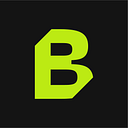“Web 3.0, Web 3.0, Web 3.0.”
If you’re in tech you’re probably tired of hearing this word. If you aren’t in tech, you’re probably wondering what in God’s name is going on here.
Web 3.0 has been proposed as the future of the internet and for good reasons we’ll explore. Before we delve into Web 3.0, what exactly is the Web? The web or internet refers to our favourite tech hub that connects billions of people across the world via networks of computers.
The web has evolved since its inception in the 90s, and we’ve gone from sending emails to learning courses online and playing video games. This evolution has been described by the tech community as Web 1.0 and Web 2.0.
Web 1.0
In the beginning, there was web 1.0 then tech bros said let there be fun. The pioneer version of the internet, referred to as web 1.0, was popular from 1980 to 2004. Here, all you did was view content without the ability to edit or interact with it. Subsequently, as with all things tech, an update rolled out in due time.
Enter Web 2.0:
This version of the internet is the current platform on which we all thrive online. Instead of static, read-only content like its predecessor, the web became a place for dynamic content where users started to interact with published content.
The advent of Web 2.0 gave rise to programming languages like JavaScript, HTML and CSS — all of which allowed you to edit, design and manipulate content. From shopping onAmazon to uploading a new blog post or even scrolling through Instagram, Web 2.0 thrives on real-time interaction.
Web 3.0? The future?
Web 3.0 goes further than its predecessors. This relatively new platform leverages the latest technologies to achieve real-world human communication.
This includes machine learning (the capability of a machine to imitate intelligent human behaviour) and blockchain (a system of recording information in a way that makes it difficult or impossible to change, hack, or cheat the system).
Web 3.0 seeks to achieve the same success as Web 2.0, only this time we have more control over our data.
This new platform will allow machines to understand and interpret information in an organized format, making sure you can find, share and combine information more easily. This means that when you search for an answer, web 3.0 delivers the most accurate and relevant result to the end-user.
One of the biggest advantages of Web 3.0 is that it gives you greater control over your data and the option to sell it to organizations like Google, Facebook and other entities.
In essence, Web 3.0 allows you to enjoy personalized interactions with machines and websites, almost like they were human indeed.
Differences Between Web 2.0 and Web 3.0
- Web 2 is more about incentivizing platforms that deliver content (e.g facebook, instagram and Youtube) while 3.0 is focused on empowering individuals.
- Web 3.0 will run on artificial intelligence, machine learning and decentralization. This is different from Web 2 which primarily runs on HTML, CSS and Javascript.
- In Web 2.0, the platform is king. In Web 3.0 the user owns the data.
In conclusion, here’s a quick recap; Web 1.0 holds the title of pioneer, serving as the foundation on which social media, blogging and all the amazing things you enjoy today were built.
The middle child, Web 2.0 is still very much the mainstream solution and opened our minds to a bigger understanding of the use of the internet. Web 3.0 promises a future internet where independence is king and content evolves into layers previously unimaginable.
All three web versions differ in their own way but all share a singular trait; they’ve aided the advancement of communication and the world itself.
Now that you know all about Web 3.0, go ahead and show off your knowledge to your friends. Also don’t forget to join the Breach community to learn more about crypto and its uses. Remember that learning is better with crypto-curious friends.
